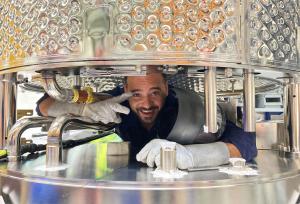First cryopump expected in the coming months
Mechanical pumps alone cannot achieve the vacuum quality that is indispensable to producing the ITER plasmas. Once mechanical pumps have evacuated most of the air molecules and impurities from inside the vacuum vessel, six torus cryopumps will finalize the job and trap the remaining particles. Two other cryopumps in the cryostat will maintain the low pressure required for the operation of the superconducting magnets.
These complex pumps have been in design for years to meet the very specific applications and requirements at ITER. All are based on cryopanels, cooled with supercritical helium and coated with activated charcoal as sorbent material for imprisoning particles.
Under the terms of a Procurement Arrangement signed with the ITER Organization in 2018, the European Domestic Agency (Fusion for Energy) is procuring the eight cryopumps based on a design developed through the close collaboration of experts at ITER and Fusion for Energy and the participation of European industry. The first production pump is expected at ITER before the end of the year.


